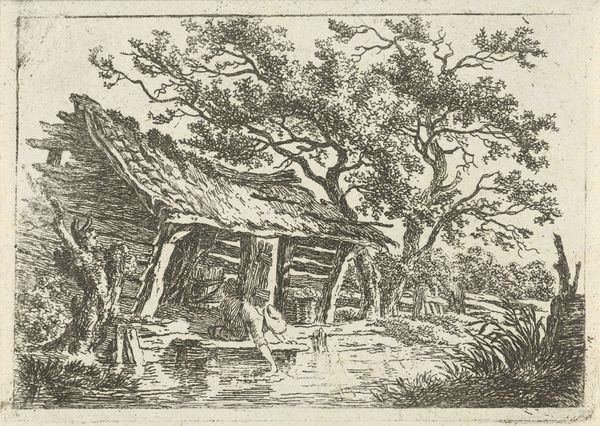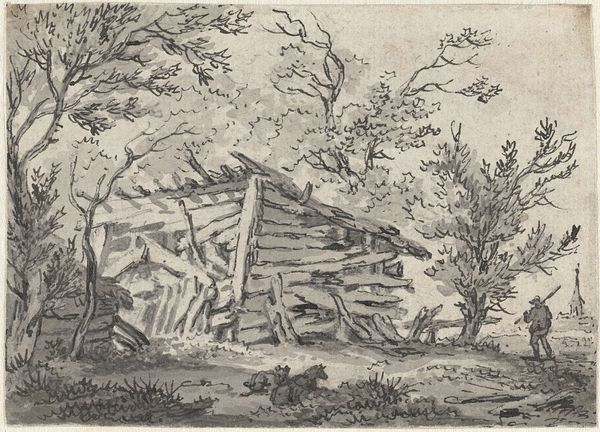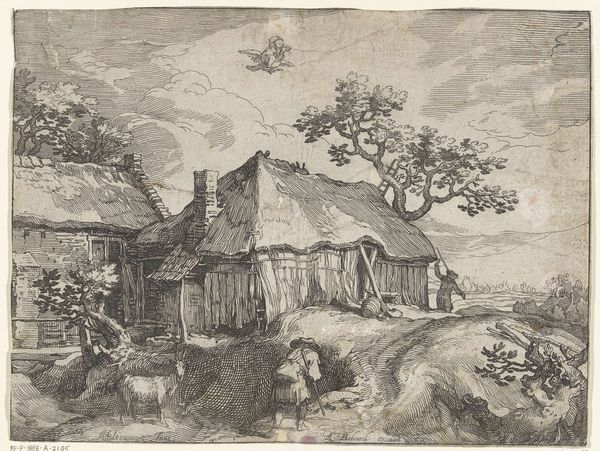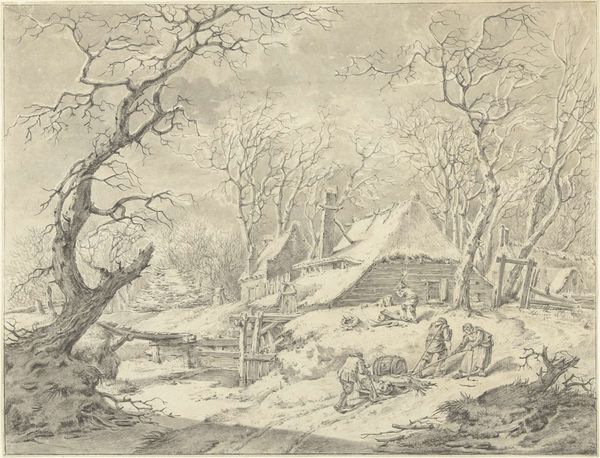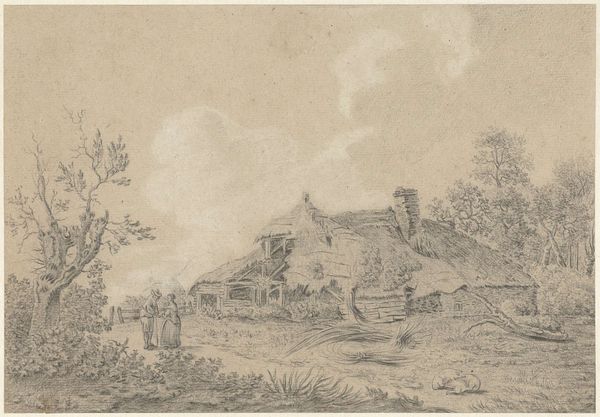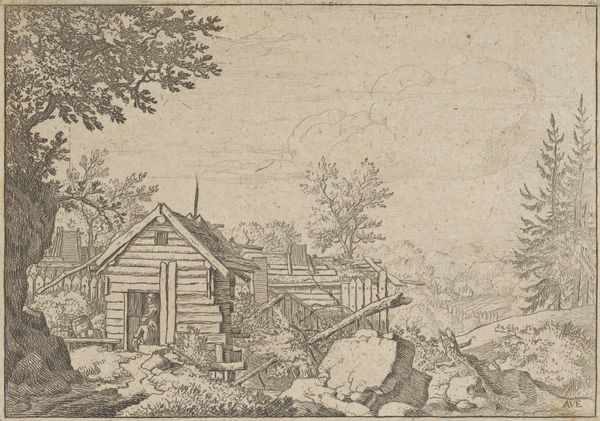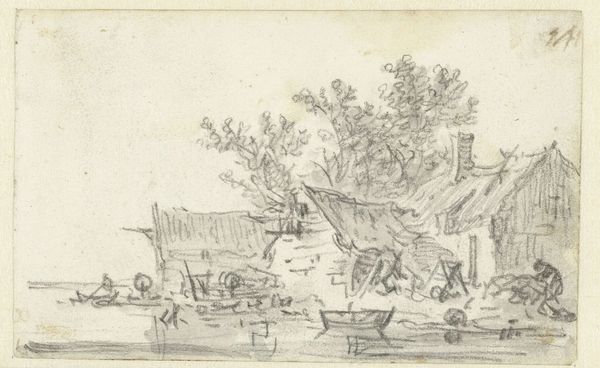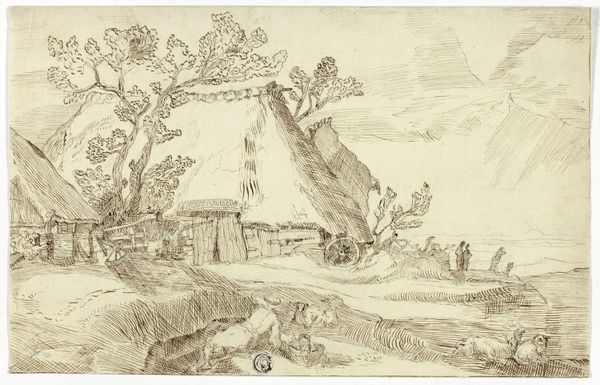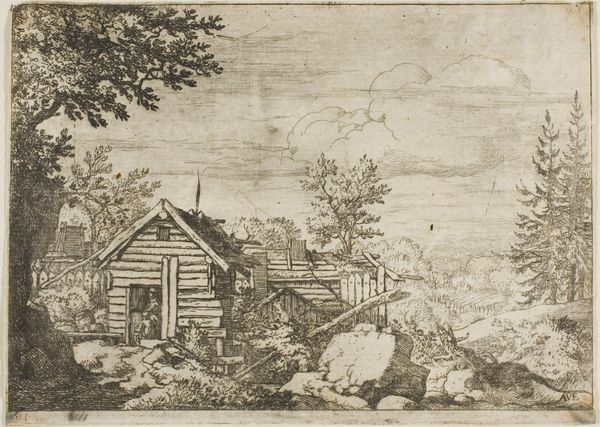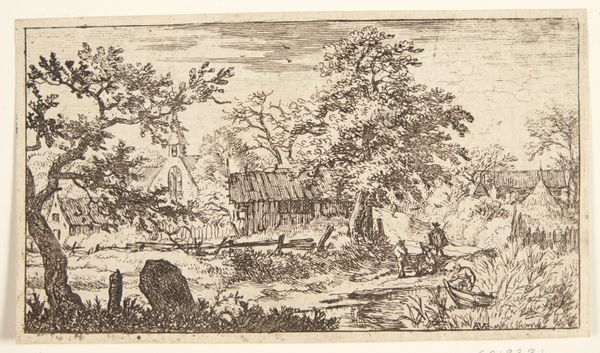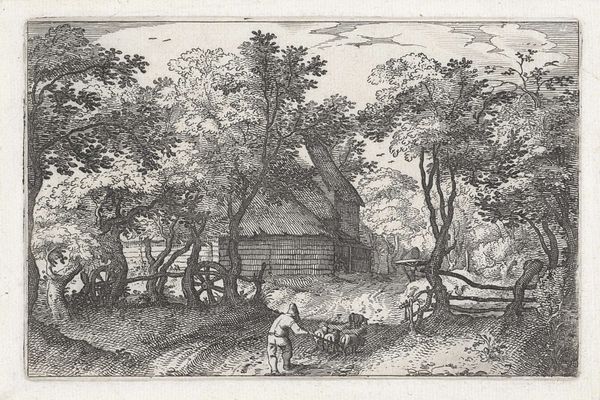
drawing, ink, pencil
#
drawing
#
pen drawing
#
landscape
#
ink
#
romanticism
#
pencil
Dimensions: height 85 mm, width 117 mm
Copyright: Rijks Museum: Open Domain
Curator: This drawing is attributed to François Joseph Pfeiffer. Titled "Schuurtje aan het water"—or "Shed on the Water"—it was likely created sometime between 1788 and 1835 using ink, pencil, and pen. Editor: There's a melancholic beauty to it. The limited palette emphasizes the textures, particularly in the rickety shed and the full, drooping tree looming over it. Curator: Note how Pfeiffer employs line weight to create depth and shadow. The foreground is rendered with darker, thicker lines, guiding our eye back to the lighter washes suggesting the distant background. The structural integrity is, quite literally, based on lines. Editor: Absolutely, the structure is critical, but consider the socio-economic context of such a subject. Romanticism favored rural life, presenting it, perhaps idealistically, as an escape from industrializing urban centers. How does the portrayal of this modest shed contribute to that romanticized vision? Curator: The cross-hatching employed, especially in rendering the thatched roof, produces a tactile quality. It mimics the rough texture of the materials. What is presented isn't just an image but a studied observation of texture and form. Editor: But beyond form, the inclusion of the figure and suggestion of everyday activity lends the piece a certain human element, grounding it within the lived experiences of the time. Were similar images used as social commentary? I see this is like a snapshot of an ordinary life. Curator: Perhaps the figure represents not a specific individual but humankind's connection to a simple pastoral existence. The relationship to landscape rather than portraiture allows the romantic concept to breath freely and more timelessly. Editor: Thinking about the distribution of these drawings... Did images like these perpetuate particular narratives? I believe they influence not only contemporary viewers, but how later audiences conceive rural life. Curator: Analyzing Pfeiffer's choice of line and wash reveals an emphasis on form that’s independent of such overt political messaging. Focusing too heavily on a social reading could risk diminishing the intrinsic aesthetics he achieved here. Editor: Agreed. Still, contemplating the interplay between formal structure and historical context provides a deeper appreciation of the drawing’s multifaceted layers. Curator: Indeed, considering the interplay only heightens that viewing experience and enhances our insight.
Comments
No comments
Be the first to comment and join the conversation on the ultimate creative platform.
